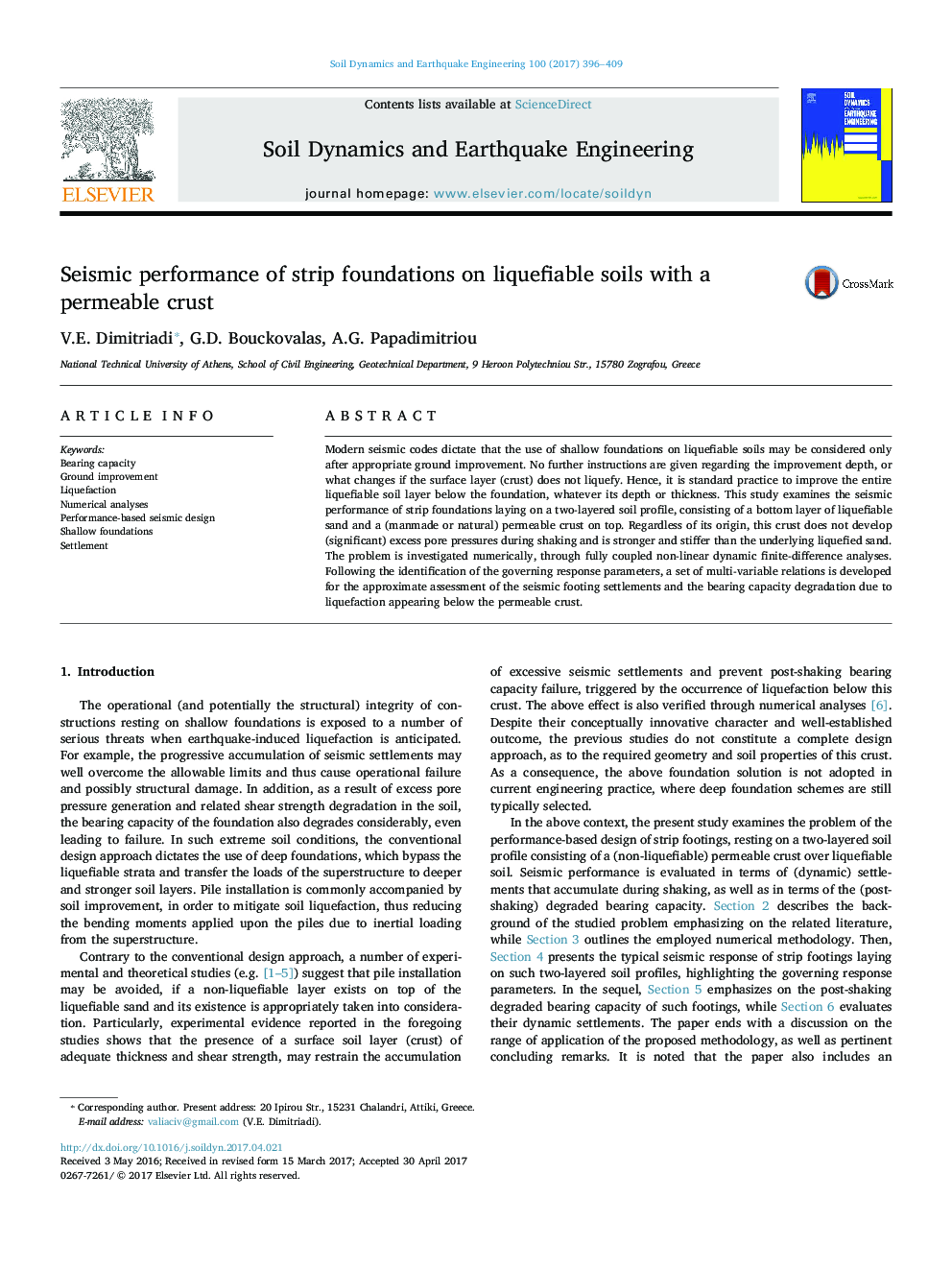| Article ID | Journal | Published Year | Pages | File Type |
|---|---|---|---|---|
| 4927035 | Soil Dynamics and Earthquake Engineering | 2017 | 14 Pages |
Abstract
Modern seismic codes dictate that the use of shallow foundations on liquefiable soils may be considered only after appropriate ground improvement. No further instructions are given regarding the improvement depth, or what changes if the surface layer (crust) does not liquefy. Hence, it is standard practice to improve the entire liquefiable soil layer below the foundation, whatever its depth or thickness. This study examines the seismic performance of strip foundations laying on a two-layered soil profile, consisting of a bottom layer of liquefiable sand and a (manmade or natural) permeable crust on top. Regardless of its origin, this crust does not develop (significant) excess pore pressures during shaking and is stronger and stiffer than the underlying liquefied sand. The problem is investigated numerically, through fully coupled non-linear dynamic finite-difference analyses. Following the identification of the governing response parameters, a set of multi-variable relations is developed for the approximate assessment of the seismic footing settlements and the bearing capacity degradation due to liquefaction appearing below the permeable crust.
Keywords
Related Topics
Physical Sciences and Engineering
Earth and Planetary Sciences
Geotechnical Engineering and Engineering Geology
Authors
V.E. Dimitriadi, G.D. Bouckovalas, A.G. Papadimitriou,
